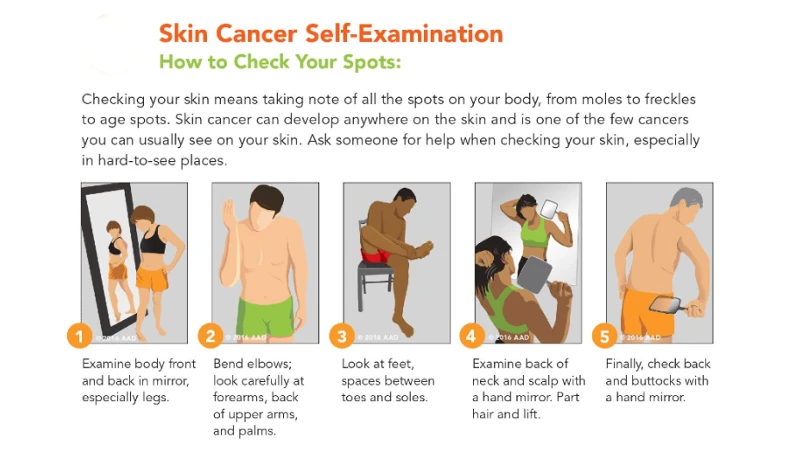Blog
Why Your Spring Skincare Routine Needs Sunscreen
Today, March 20th, marks the Spring Equinox and we’re sharing tips to help you transition to a spring skincare routine. More in this post. How Can I Take Care of My Skin in Spring? While springtime sun exposure is less dangerous than that in the summer, you still need to be concerned about the potential damage from the sun’s UVA and UVB rays. UVB rays contribute to sunburn (along with some types of skin cancer) while UVA rays penetrate deeper and contribute to signs of skin aging including wrinkles, sagginess, age spots and with skin cancer. For this reason, it’s important to protect your skin during the spring and all year long. It is also a good time to take stock of the products you’re using in preparation to transition over from winter skin care. 5 Reasons Your Spring Skincare Routine Needs Sunscreen It’s not only spring, but year round that you need to pay attention for healthy skin. The main culprit is sun damage and these 5 reasons are why your spring skincare routine must include sunscreen: More Than 3.5 Million New Skin Cancer Cases Each Year. In the United States alone, more than 3.5 million cases of skin cancer are diagnosed each year. Risk factors for all types of skin cancer include skin that burns easily; blond or red hair; a history of excessive sun exposure, including sunburns; tanning bed use; immune system-suppressing diseases or treatments; and a history of skin cancer. People with more than 50 moles, atypical moles, or large moles are at an increased risk of developing melanoma, as are those with light skin and freckles, and those with a personal or family history of melanoma. Skin Cancer Can Affect Anyone. Regardless of skin color, skin cancer can strike anyone. In patients with skin of colour, it is often diagnosed in its later stages, when it’s more difficult to treat. Research has shown that patients with skin of colour are less likely than Caucasian patients to survive melanoma. They are also more prone to skin cancer in areas that aren’t commonly exposed to the sun, like the palms of the hands, the soles of the feet, the groin and the inside of the mouth. They also may develop melanoma under their nails. 90 Percent of all Skin Cancers Attributed to Excessive Sun Exposure. Research indicates that UV light from the sun and tanning beds can both cause melanoma and increase the risk of a benign mole progressing to melanoma. Increasing intermittent sun exposure in childhood and during one’s lifetime is associated with an increased risk of squamous cell carcinoma, basal cell carcinoma and melanoma. Even one blistering sunburn during childhood or adolescence can nearly double a person’s chance of developing melanoma. Five or more between ages 15 and 20 increases one’s melanoma risk by 80 percent and nonmelanoma skin cancer risk by 68 percent. Springtime Sun is Not Safe. In fact, it is sometimes considered more dangerous because the cooler temperatures may fool you into thinking you aren’t getting much sun exposure. Springtime is a good time to purchase a new bottle of sunscreen. Sunscreens expire and can lose their effectiveness after being opened for a year or so. Check the expiry date on your sunscreen and replace if necessary. Daily Sunscreen Use Cuts the Incidence of Melanoma. Research in 2010 showed a reduction by 50%. Choose a sunscreen with an SPF of at least 30 and make sure you apply enough. In general, use ¼ teaspoon for your face alone. From head to foot (assuming you’re wearing a bathing suit), apply the equivalent of a shot glass full of sunscreen. Sunscreen breaks down when it is exposed to sunlight, sweat or water so it should be reapplied every two hours or after you are exposed to water or sweating heavily. Sunscreen is an Essential Part of Your Spring Skincare Routine While it’s always important to cleanse, protect skin with antioxidants, repair with retinoids and moisturize, sun protection is #1. Follow these tips to get the most out of sun protection. Practice Sun Smart Habits. Since UV light exposure is the most preventable risk factor for all skin cancers, the American Academy of Dermatology encourages everyone to practice safe habits: Seek shade and avoid sitting directly in the sun between 10:00 AM and 4:00 PM Wear protective clothing, including long sleeves and legs, wide-brimmed hats, Use a sunscreen with an SPF of 30+. Avoid tanning beds or sun lamps, which are sources of artificial UV radiation that may cause skin cancer. Protect your Eyes. Between five and 10 percent of skin cancers occur on the eyelids according to the Skin Cancer Society. Use UV-blocking sunglasses. Large frames or a wrap-around styles are best. Skin Cancer is Curable. Basal cell and squamous cell carcinomas, the two most common forms of skin cancer, are highly curable if detected early and treated properly. The vast majority of skin cancer deaths are from melanoma, which has a five-year survival rate of 99 percent for people whose melanoma is detected and treated before it spreads to the lymph nodes. Get Checked Out. The American Academy of Dermatology encourages everyone to perform skin self-exams to check for signs of skin cancer and get a skin exam from a doctor. A dermatologist can make individual recommendations as to how often a person needs these exams based on risk factors, including skin type, history of sun exposure and family history. Skin cancer warning signs include changes in size, shape or color of a mole or other skin lesion, the appearance of a new growth on the skin, or a sore that doesn’t heal. If you notice any spots on your skin that are different from the others, or anything changing, itching or bleeding, the American Academy of Dermatology recommends that you make an appointment with a board-certified dermatologist. If you’re anything like me, it’s been a long, cold and grey winter and you’re hungry for springtime sun! Wear your sunscreen, put on your favourite pair of sunglasses and enjoy. Let us know if you have any spring skincare routine tips to share.
Learn moreMay is Skin Cancer Awareness Month
May is Skin Cancer Awareness Month and throughout the month of May, people are encouraged to do their part to raise awareness about skin cancer. Skin cancer is the most common form of cancer in the United States and the third most common in Canada. Fortunately, it is also one of the most preventable forms of cancer and highly treatable when detected early. Shop All Apothekari Most cases of melanoma, the deadliest kind of skin cancer, are caused by exposure to ultraviolet (UV) rays. Basal and squamous cell skin cancers are more common than melanoma, but Melanoma is the most likely form of skin cancer to grow and spread to other parts of the body, making it more difficult to treat. Risk Factors for Skin Cancer Include: Too much exposure to ultraviolet (UV) radiation from the sun or tanning beds Pale skin and natural red, or blond hair Family history of skin cancer Multiple or unusual moles Older age (though young people are not immune to skin cancer) Severe sunburns in the past How To Minimize Your Chances of Developing Skin Cancer Avoiding too much sun, covering up, and using sunscreen is the key to preventing skin cancer. Our sister store – Phamix.com – stocks a wide range of safe and effective sunscreens. If found and treated early, all forms of skin cancer are almost always curable. You can help reduce your chances of developing skin cancer by: Staying out of the sun during peak hours of the day when the sun’s rays are the strongest (10am to 4pm). Covering up as much of your body with protective clothing as possible when in the sun Apply generous amounts of sunscreen with broad spectrum protection and at least SPF of 30 or higher when outside. Reapply every two hours, or after swimming or sweating. Cover your head with a wide-brimmed hat, shading your face, ears, and neck. Wear sunglasses that block 100% of UVA and UVB rays to protect the eyes and surrounding skin. Avoid other sources of UV light, including tanning beds and sun lamps. Have regular skin cancer screenings to detect possible skin cancer in early stages. The American Academy of Dermatology’s 2017 SPOT Skin Cancer™ campaign — “Check Your Partner. Check Yourself” — is encouraging women to check both their partners and themselves for signs of skin cancer. When detected early, skin cancer — including melanoma, the deadliest form of skin cancer — is highly treatable. Research has shown that women are nine times more likely than men to notice melanoma on others, which means women could help save their partners’ lives by helping them spot skin cancer. This is especially important for men over 50 as they have an increased risk of developing melanoma compared to the general population. If you notice any suspicious spots on your skin or your partner’s skin, or anything changing, itching or bleeding, see a dermatologist. Image Source: American Academy of Dermatology Association
Learn moreWhy Sunscreen?
Why sunscreen? Ask anyone and the majority of individuals will reply that sunscreen is important to prevent sunburns. So they will happily apply it if they are going to be outside under the hot sun for a prolonged period of time. Sunscreen can help to prevent sunburns and there’s no denying that avoiding sunburns is important. Not only for the discomfort that one brings, but also for the longer term health implications of skin cancer and melanoma. Studies have shown that blistering sunburns experienced when you are younger can significantly increase the risk for basal cell carcinoma (BCC) and squamous cell carcinoma (SCC) of the skin, along with melanoma. Shop All Apothekari The sun, however, is responsible for much more than sunburn. The sun releases two types of harmful UV rays – UVA rays and UVB rays. UVA rays are longer ones associated with skin aging including wrinkles, age spots and saggy skin (photo ageing). They are prevalent year round, even on cloudy days and can penetrate through windows. UVB rays are shorter and the ones responsible for sunburns. So the answer to why sunscreen, is two-fold. First, to avoid the red, blistering and peeling skin associated with sunburns. And second, to help skin looking youthful and healthy. Studies have shown that the sun’s UV rays are responsible for more than 80% of skin aging so it’s important to make its application a regular part of your skincare routine. If you want to avoid the damaging effects caused by sun exposure, you’ll need to apply sunscreen daily, year round. Yup. Every. Single. Day. How To Choose A Sunscreen When it comes to choosing a formulation, look for products that are labelled broad spectrum and with a minimum SPF 30 rating. Broad spectrum sunscreens protect against both UVA and UVB rays while an SPF 30 rating means it will guard against 97 percent of UVB rays. Our sister store, Phamix.com stocks a wide range of Anthelios sunscreens and Ombrelle sunscreens, which contain safe and effective sun filters and a favourite amongst customers and health care professionals alike. And don’t rely on sunscreen alone. Practice ‘sun smart’ habits, which include: Seeking Shade. Especially during the sun’s peak hours between 10 am and 4 pm Wearing Sun Protective Clothing. Long sleeves, hats and sunglasses Reapplying Sunscreen. Especially if you are sweating or have been swimming. There are many important topics to tackle when it comes to skincare, but Why Sunscreen is an extremely relevant one. Not because sunscreen is so important to youthful looking skin, but also because it’s essential to healthy skin. I’ll be revisiting this topic in future posts so don’t hesitate to let me know if you have any specific questions you’d like me to tackle in the comments below.
Learn more



